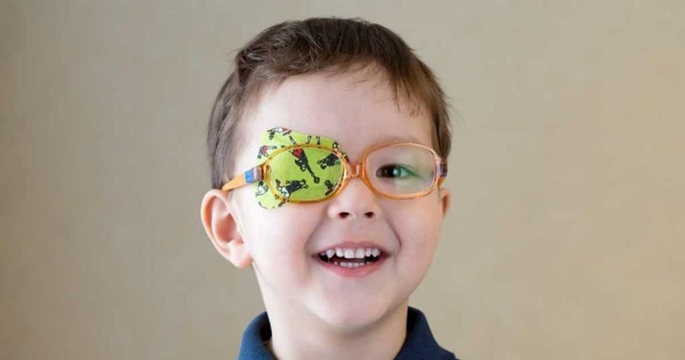What might the nurse explain as a common treatment for amblyopia?
Patching the good eye to force the brain to use the affected eye
Patching the affected eye to allow the refractory muscles to rest
Using corticosteroids to treat inflammation of the optic nerve
Using glasses that will slightly blur the image for the good eye
The Correct Answer is A
A. Amblyopia occurs when one eye has weaker vision than the other due to abnormal visual development early in life. Patching the good eye helps to encourage the brain to rely more on the weaker eye, stimulating its visual development. This treatment aims to improve vision in the affected eye and restore visual acuity.

B. Patching the affected eye is not a common treatment for amblyopia. In fact, patching the affected eye would further decrease visual input to that eye and could potentially exacerbate the condition. The goal of treatment for amblyopia is to strengthen the weaker eye by encouraging its use, rather than resting it.
C. Corticosteroids are not typically used to treat amblyopia unless there is a specific underlying condition causing inflammation of the optic nerve. Amblyopia is primarily a developmental issue rather than an inflammatory condition, so corticosteroids would not be the first-line treatment for this condition.
D. This is not a common treatment for amblyopia. In fact, the goal of treatment for amblyopia is to improve vision in the affected eye, not to intentionally blur the vision in the good eye. Glasses prescribed for amblyopia typically aim to correct refractive errors (such as nearsightedness, farsightedness, or astigmatism) and provide clear vision to both eyes, which can help support visual development in the weaker eye.
Nursing Test Bank
Naxlex Comprehensive Predictor Exams
Related Questions
Correct Answer is D
Explanation
D. An oxygen saturation level of 85% is significantly below the normal range and indicates hypoxemia (low blood oxygen levels). This finding is concerning, especially in a child with cystic fibrosis, which can lead to respiratory complications such as airway obstruction, infection, or mucus plugging.
A. A blood glucose level of 140 mg/dL is within the normal range for children, so this finding would not typically require immediate reporting to the provider.
B. A serum sodium level of 156 mEq/L is significantly elevated and above the normal range. However, hypoxia is the priority.
C. A red blood cell (RBC) count of 3.2 million/µL falls within the normal range for children, so this finding would not typically require immediate reporting to the provider.
Correct Answer is D
Explanation
D. Suctioning equipment and oxygen are essential items to have at the bedside for seizure precautions. Seizures can sometimes be associated with airway compromise, excessive secretions, or respiratory distress. Having suctioning equipment readily available allows for prompt removal of oral or airway secretions if necessary. Oxygen may be needed to support oxygenation during or after a seizure, especially if there are concerns about respiratory depression or hypoxemia.
A. A tracheotomy set is not typically needed at the bedside for seizure precautions. Tracheotomy sets are used in emergency situations to establish a surgical airway if there is a severe airway obstruction or respiratory distress.
B. An emergency cart contains essential supplies and medications needed for emergency situations, including resuscitation equipment, medications, and supplies for managing various medical emergencies. However, the cart is not placed bedside.
C. A padded tongue blade is not typically needed at the bedside for seizure precautions. Tongue blades are sometimes used during airway management to help visualize and manipulate the tongue, but padded tongue blades are not routinely included in seizure precautions.
Whether you are a student looking to ace your exams or a practicing nurse seeking to enhance your expertise , our nursing education contents will empower you with the confidence and competence to make a difference in the lives of patients and become a respected leader in the healthcare field.
Visit Naxlex, invest in your future and unlock endless possibilities with our unparalleled nursing education contents today
Report Wrong Answer on the Current Question
Do you disagree with the answer? If yes, what is your expected answer? Explain.
Kindly be descriptive with the issue you are facing.
